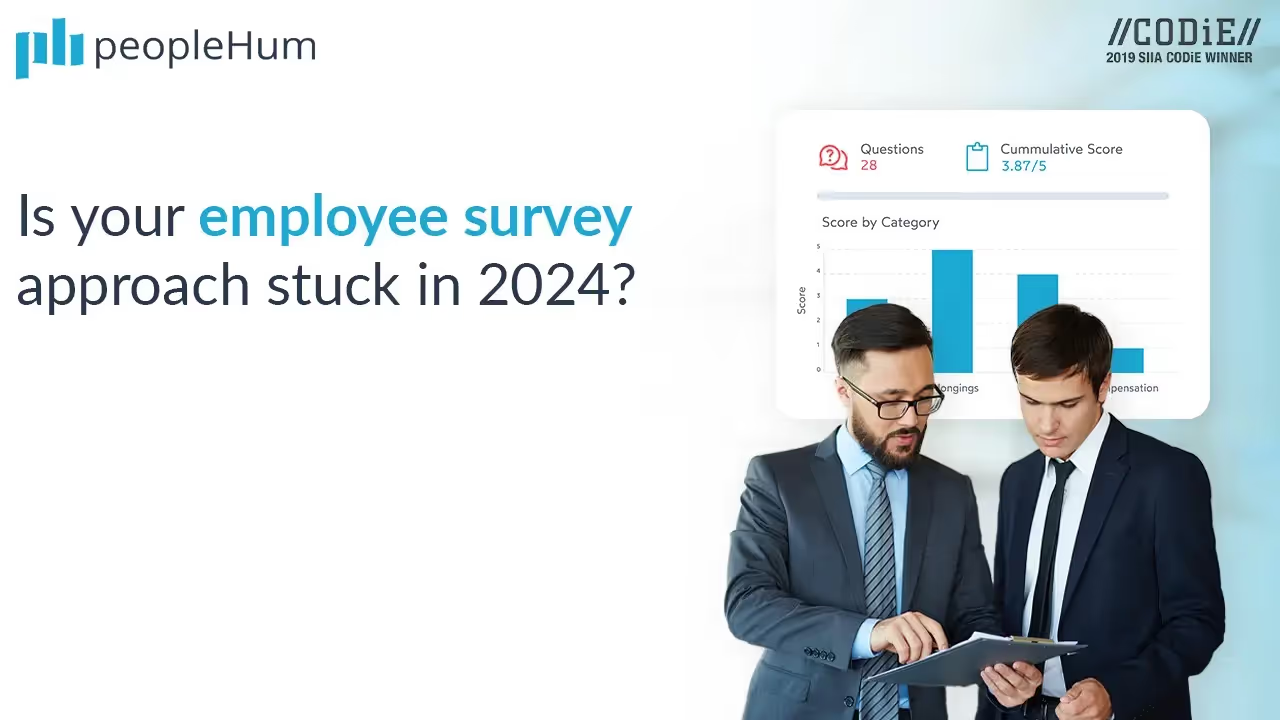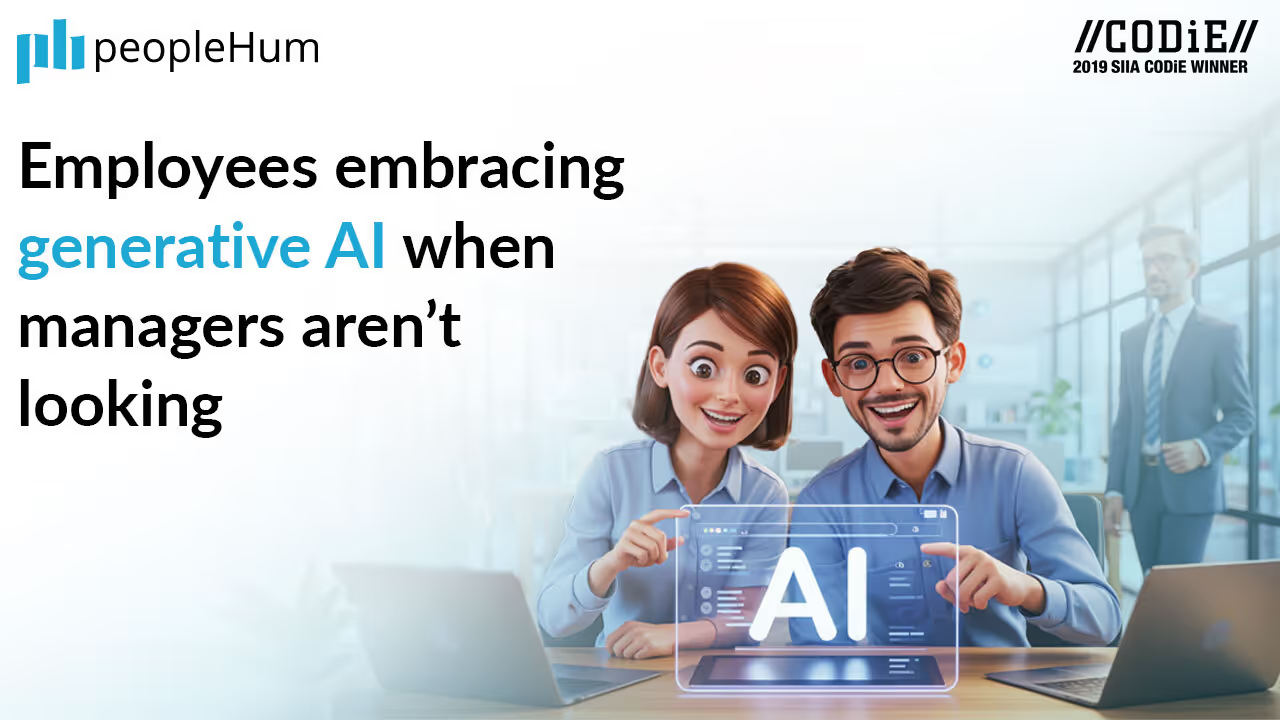Imagine you go to a nice restaurant. No matter how delicious the food or how cozy the ambiance, you might never visit the restaurant again if the service was negligent. Employees have a similar, single greatest impact on the customer service they offer. In the eyes of customers, the employees they communicate with are “the face” of the organization. A happy employee is likely to breed a happy customer.
Any employee survey approach is based on an underlying theory of “what’s important.” IBM was one of the first companies to measure employee engagement and acquire insight into workplace concepts such as morale, satisfaction, and commitment. Employee surveys are therefore designed with a specific goal in mind: to measure employee engagement in the best way possible.
When you conduct employee survey, it is no different than carrying out research. Every research has a set of 3 philosophical assumptions: a) nature of reality b) process of knowledge-building c) essence of what is right and wrong. An employee survey approach is similar to any other research that also includes the three assumptions:
1. Nature of reality: Nature of organizations
2. Process of knowledge-building: One’s way of carrying out the survey
3. Essence of right and wrong: The right way to treat people in a work setting
In this article, we’ll go over the evolution of employee surveys, the current focus and where we're going next.
Evolution of Employee Surveys: 6 Employee Listening Trends 2024
Employee survey approach are a smart way to conduct thousands of interviews at once. Without sitting down with every employee, digitized surveys would let in feedbacks.

1. Shift in what’s being measured: From Satisfaction to Engagement
There has been a shift from an emphasis on job satisfaction in the 1970s to commitment in the1990s, and finally on employee engagement since 2000. These surveys used to be heavily focused on deciding whether or not employees were satisfied at work.
Unfortunately, the results only showed a high percentage of satisfied employees despite major productivity challenges caused by hidden factors such as lack of leadership or policy changes.
“Satisfaction is a side effect of engagement, but it isn't the core metric.”
Many argue that employee engagement survey is just the old wine in a new bottle that replaces constructs like satisfaction & morale. But engagement has an intuitive appeal as a leading metric of business results.
Over the last ten years or so, surveys have changed to incorporate both employee happiness and engagement indicators as more focus on engagement has been emphasized. An employee must be both satisfied and contributing to be fully engaged.
2. Emphasis on action planning
Employee survey approach lead to expectation for action. For instance, if employees are surveyed about the quality of food in the company cafeteria, they may reasonably assume that their answers will have an impact on that food in the future.
“The mere act of data collection generates energy around those activities that are being measured and creates expectation that the data collection will have consequences” - David A. Nadler
When you conduct employee survey approach and "burying" the findings is pretty much worse than not surveying employees at all. Employees tend to become frustrated when managers do not review survey results, nor involve them in the action planning process. If no action is taken, employees may also doubt whether senior management is truly sincere in their intentions.
3. Prescriptive approach towards employee feedback
Early attempts at employee survey approach were mostly descriptive in nature. The goal was to moreover spot problematic areas for the company and leadership. This approach has now become more prescriptive & diagnostic. While leaders are still eager in knowing about their employees’ satisfaction levels, the question of how to use information about engagement as a business indicator has taken precedence.
By boosting the ability to diagnose job motivation, it will become possible for organizational change experts to wisely plan and carry out the reinvention.
4. Shift from paper-based to automated employee engagement surveys
When surveys were infants, paper-based reporting was the only possible option. A report of 7,000 global organizations (carried out by Aon Hewitt) revealed that there was a rapid shift towards digital survey reports.
Consider a scenario in which a manager is notified that one of her high-performing direct reports is at risk of leaving (due to the same type of algorithm that credit card firms use to identify and inform customers of probable credit card fraud.)
This would be determined using a combination of engagement scores, demographic data, and HRIS-tracked programming or life events. These integrated people analytics systems will be used by the astute company to become more predictive and optimize decisions in the face of diverse employee inputs.
5. Advancements in analytics
Emphasis on time and resource has shifted towards what happens after the data is collected. As said before, old survey efforts were mostly descriptive and did little to help the decision-making. The new approach supports boiling down survey data into employee experiences that matter.
The real trick is to turn volumes of survey data into actionable insights that resonate with organizational purpose. Market research and operations science have long used advanced statistics to make decisions – HR is now catching up here as well.
6. Increased employee participation in the survey
Winning the highest level of employee survey approach participation calls for a multi-faceted communication plan that promotes interest and enthusiasm for the survey. The ideal workplace communication tool must include prior notice of the survey across multiple channels, email invitations, regular reminders, etc.
Also read: Automated survey for employee feedback
7. Shift towards continuous feedback
Traditional employee surveys were often conducted annually which provided a vague snapshot of employee engagement. However, there is a growing trend towards continuous feedback systems that allow for real-time insights through tools like pulse surveys, check-ins, or feedback platforms that enable employees to provide feedback on an ongoing basis. Continuous feedback allows organizations to address issues promptly, make timely improvements, and foster a culture of open communication.
8. A focus on employee well-being
Employee surveys are increasingly incorporating questions and indicators related to employee well-being. The concept of well-being encompasses a number of factors, such as work-life balance, mental health, physical health, and overall satisfaction with one's personal and professional life. In order for organizations to increase productivity, increase engagement levels, and reduce turnover, they must prioritize employee well-being.
Conclusion
With all these metrics, technology and analytical trends, organizations will be able the fully capture notions of organizational effectiveness that matter by extending the range of metrics measured. To evaluate emotional energy, reactions to change and stress, complete rewards program trade-offs, inclusivity, culture, wellness, and labor relations, to mention a few, might all be part of these advancements.
What we seek to learn through employee survey approach from people at work, and how daily assumptions hinder our progress in improving wellbeing is why we need employee surveys. A "one-size-fits-all" approach to engagement will dwindle, and interventions will become more individual-focused.



































.avif)
%20(1).avif)













